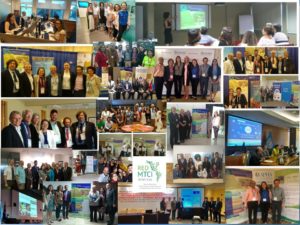About
- The VHL TCIM
- The TCIM Network
- The Thematic Area
- Definitions TCIM
- VHL TCIM Website
- The Collection
- The MOSAICO Database
- About logos
- Promotional Materials
- Image gallery
- Results reports
- How to support the VHL TCIM?
Virtual Health Library on Traditional Complementary and Integrative Medicine (VHL TCIM)
The Virtual Health Library on Traditional, Complementary, and Integrative Medicine (VHL TCIM) is a thematic VHL which specializes in Traditional, Complementary, and Integrative Medicine (TCIM) and its related health practices.
The VHL TCIM applies the VHL model of network collaboration.
The VHL TCIM aims to promote the presence, access, use, and publication of scientific, technical, and educational content that will contribute to the promotion, development and integration of the TCIM into health care services and systems in the Americas Region through the collaboration of stakeholders.
Lines of Action:- To promote open access to scientific, technical information and evidence on TCIM
- Promotion informed decision-making, using the best available knowledge and evidence on TCIM
- Facilitate the exchange of knowledge and collaboration amongst stakeholders
- Experience exchange and visibility of good practices
The VHL TCIM is a collaborative and participative virtual space, developed and managed by the Traditional, Complementary and Integrative Medicine Network for the Americas (TCIM Americas Network). This Network was established by the cooperation between institutions and organizations involved in the training, regulation, promotion, research development, and provision of TCIM services. The Pan-American Health Organization/ World Health Organization (PAHO/WHO), by means of the Latin-American and Caribbean System on Health Sciences Information (BIREME/PAHO/WHO), works as the articulator and facilitator of the afore mentioned Network.
The VHL TCIM is aligned with a series of the WHO and PAHO/WHO policy strategies, including the WHO Traditional Medicine Strategy 2014-2023, the PAHO/WHO Ethnicity and Health Policy, and the PAHO/WHO Strategy for Universal Access to Health and Universal Health Coverage (Resolution CD53.R14), among others (for more details, see "The Thematic area”).
VHL TCIM BackgroundIn 2015, the idea of the VHL TCIM started in an agreement established by the BIREME and PAHO/WHO representation in Nicaragua, and the Instituto de Medicina Natural y Terapias Complementarias (IMNTC) from Nicaragua, with the purpose of integrating other countries.
After a series of joint actions by the key stakeholders, the project for the development of the VHL TCIM started to consolidate. During the early stage, the first sketches of the site were developed, info metrics were calculated, and reference documents were identified. The Nicaragua team created an initial inventory of sources of information, initially categorizing themes related to TCIM and identifying possible allies. BIREME team used the VHL model to develop a thematic TCIM site; and developed applications (services) to integrate information and educational resources of national and international of information from the field into a site available on the web. Additionally, BIREME led capacity-building processes for the collaboration Network and the coordinators of this initiative.
The VHL TCIM project was presented at the Regional meeting “Advancing Towards Universal Health, Contributions of Traditional and Complementary Medicine”, which took place in Managua, Nicaragua, on June 6-8, 2017, and that was, in turn, a call for action convened by PAHO/WHO Regional Office. During the meeting, delegates from several countries proposed the creation of a collaboration network in TCIM for the Americas. It was then when the VHL TCIM project took off.
The TCIM Americas Network took over management of the VHL TCIM, and the early effort started to have a regional scope. The collaborators of the TCIM Americas Network have developed all the contents of the VHL TCIM site together. They have met with national health authorities, healthcare institutions, academic institutions, researchers, non-governmental organizations, and some others, to make this project feasible.
About the TCIM Network for the Americas
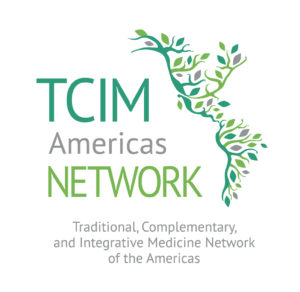 The Traditional, Complementary, and Integrative Medicine Network for the Americas (TCIM Americas Network) is a collaborative initiative, created with the objective of interconnecting several stakeholders involved in the formulation of policies, regulation, training, promotion, practice, use and research of TCIM in the Americas. The aim is to develop a common agenda and advance in the integration of TCIM in healthcare systems and services according to each national context.
The Traditional, Complementary, and Integrative Medicine Network for the Americas (TCIM Americas Network) is a collaborative initiative, created with the objective of interconnecting several stakeholders involved in the formulation of policies, regulation, training, promotion, practice, use and research of TCIM in the Americas. The aim is to develop a common agenda and advance in the integration of TCIM in healthcare systems and services according to each national context.
The TCIM Americas Network is an inclusive, horizontal-governance initiative, currently gathering several organizations from 15 countries of the Americas, and continuously growing. The TCIM Americas Network was established in June 2017 by a group of delegates in the Regional Meeting “Advancing Towards Universal Health: Contributions of Traditional and Complementary Medicine”, in Managua, Nicaragua (click here to know more about the event).
Since its establishment, the TCIM Americas Network took over the management of the Virtual Health Library on Traditional, Complementary, and Integrative Medicine (VHL TCIM). This Network is responsible for the content and development of the portal, and also, of the specialized TCIM database, with the technical support from BIREME/PAHO/WHO.
MissionThe TCIM Americas Network is a “network of networks” that gathers together institutions and organizations which formulate policies, regulate, train health professionals, carry out research, develop programs, and educate the general public about the Traditional, Complementary, and Integrative Medicine, (TCIM) and related health practices. Through collaboration and knowledge management, the Network seeks to support decision-making in health, strengthen the capacities of professionals and managers in TCIM, including research, to contribute to the well-being of people, and the development to systems of health more inclusive and sustainable, to advance towards Universal Health.
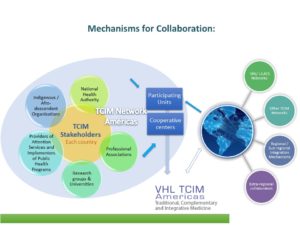 Health authorities and regulatory agencies
Academia (professional training programs in TCIM, research groups)
Indigenous and/or Afro-descendant organizations
Professional associations at TCIM
National or international networks
Providers of health care services and public health programs
NGOs that act in MTCI
Health authorities and regulatory agencies
Academia (professional training programs in TCIM, research groups)
Indigenous and/or Afro-descendant organizations
Professional associations at TCIM
National or international networks
Providers of health care services and public health programs
NGOs that act in MTCI
- To establish cooperation ties among all stakeholders in countries of the Americas for the development of the different aspects of TCIM: development of public policies, regulation (of practices, products, and practitioners), training of health professionals, research, health education, and the provision of healthcare services.
- To compile and systematize technical, scientific, regulatory and public policy information, in TCIM area in the Americas, throughout a specialized database and the portal of the VHL TCIM, as well as the collaboration among stakeholders at regional levels.
- To manage the VHL TCIM, as a meeting point of several stakeholders who work in TCIM in the Americas, with the purpose of developing a regional outlook about the different aspects of TCIM, facilitating the exchange of experiences, facilitating access to scientific, technical and health education information, supporting the strengthening of capabilities and visibility of good practices.
- To promote collaborative research in TCIM in the Americas
- To encourage, in a participatory way, the rescue of ancestral knowledge, including traditional indigenous medicine, Afro-descendant medicine and the different medical systems from other ethnical diversities.
- To promote the worldwide visibility of public policies, models of integration and implementation of the TCIM in health systems, as well as the conceptual developments, knowledge, and practices of traditional medicine, and research in TCIM developed in the Americas.
- To support decision-making processes for TCIM integration to healthcare systems and services in the Americas, according to each national context, following the recommendations of the WHO Traditional Medicine Strategy (2014-2023).
Argentina
- Integrative Medicine team, Garrahan Pediatrics Hospital
- Fundación de Salud Ayurveda Prema
- Department of Homeopathy, University of Maimonides
- SAMH. Argentine Society of Homeopathic Medicine
Bolivia
- Ministry of Health
- Institute of Pharmacobiochemical Research, University of San Andres
Brazil
- National Coordination of Integrative and Complementary Practices (PICS); Ministry of Health Care / Ministry of Public Health
- Special Secretary for Indigenous Health, Ministry of Health
- Consórcio Acadêmico Brasileiro de Saúde Integrativa
- The network of Social Actors in Comprehensive and Complementary Practices in Health -REDEPICS
- Paulista Homeopathic Association
- Instituto Aggeu Magalhães- Fundação Oswaldo Cruz de Pernambuco
- Virtual Health Library in Homeopathy- BVS Homeopatia -HOMEOINDEX
Chile
- Department of Pharmaceutical Policies and Regulations, Health Providers and Complementary Medicines – Division of Healthy Public Policies and Promotion (DIPOL), Secretary of Public Health, Ministry of Health
- Department of Health and Indigenous Peoples and Interculturality, Ministry of Health
Colombia
- BVS Colombia
- Workgroup on Alternative Medicine and Complementary Therapies, Ministry of Health and Social Protection
- Nueva Granada Militar University
- Master in Alternative Medicine, National University of Colombia
- Juan N Corpas University Foundation
- Luis G Paez University Foundation
- The academic research team “Health, medical knowledge, and society”. Externado University of Colombia
- Center for Intercultural Medical Studies CEMI. University of Rosario
Cuba
- Provincial Division of Public Health of Havana, Department of Natural and Traditional Medicine
- Program of Natural and Traditional Medicine, Ministry of Public Health
- Infomed
- National School of Public Health
- Cuban Society of Bioenergetic Medicine
- National Center for Clinical Trials Coordinator (CENCEC)
- Center for the State Control of Medicines, Equipment and Medical Devices (CECMED)
Equador
- Nacional Division of Intercultural Health, Ministry of Health
- AEMEMI Ecuatorian Association of experts physicians on integrative medicine
Guatemala
- General Division of Research, University of San Carlos of Guatemala
Mexico
- Traditional Medicine and Intercultural Development Division, Ministry of Health
- National School of Medicine and Homeopathy, Polytechnic National Institute (IPN)
- Master in Homeopathy and Master in Acupuncture, Polytechnic National Institute (IPN)
- Homeopathic National Hospital
Nicaragua
- Institute of Natural Medicine and Complementary Therapies (IMNTC), Ministry of Health
Paraguay
- Universidad Nacional de Asunción
Peru
- Complementary Medicine Management, Social Security of Peru, EsSalud
- Red BVS Perú
United States
- Journal of Alternative and Complementary Medicine
- Integrative, Complementary and Traditional Health Practices Section of the American Public Health Association-ICTHP- APHA
- Academy of Integrative Health & Medicine- AIHM
- Academic Collaborative for Integrative Health- ACIH
International Network
- Network for the Ibero-American Integration of Medical Research in Homeopathy (REDIMEH)
- TRAMIL Network
About the TCIM theme
The concept of “Traditional, Complementary, and Integrative Medicines” (TCIM) encompasses a series of medical systems, therapies, and health practices. What they all have in common is that they look at human beings, health, and disease as a whole. Some of these systems are part of the ancestral traditions and knowledge of millenary cultures; others are innovative propositions that promote a holistic view of life, health, disease processes, attention, care, recovery, rehabilitation, and also death.
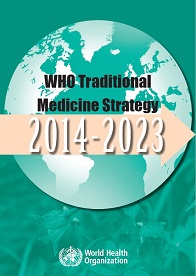 The use of TCIM largely varies in between countries and contexts. In many countries, “traditional medicine is the main pillar of health services” (WHO, 2013), or it is used as a complement to biomedical (conventional) treatment. The WHO Traditional Medicine Strategy (2014-2023) recognizes that TCIM is “an important and often underestimated part of healthcare. It is practiced in almost all countries in the world, and its demand is increasing” (WHO, 2013).
The use of TCIM largely varies in between countries and contexts. In many countries, “traditional medicine is the main pillar of health services” (WHO, 2013), or it is used as a complement to biomedical (conventional) treatment. The WHO Traditional Medicine Strategy (2014-2023) recognizes that TCIM is “an important and often underestimated part of healthcare. It is practiced in almost all countries in the world, and its demand is increasing” (WHO, 2013).
The World Health Assembly and the Executive Board of the World Health Organization (WHO) have approved along the years a series of resolutions that reflect the agreement among Member States about the importance of preserving, promoting, investigating, regulating, and assuring quality of TCIM, as well as integrating it to national health systems. In 2014, the World Health Assembly approved the Resolution WHA67.18 about Traditional Medicine. Recently, in 2016, it approved Resolution WHA69.24 Strengthening Integrated, People-Centered Health Services that encourages Member States to integrate TCIM into health services, whenever possible, taking a holistic focus on health into consideration.
WHO has published an important number of documents about the theme, including policy instruments, norms for training in different practices/systems, nomenclature standards, as well as methodology investigation guides, guides for the development of information directed to the public, guides for medicinal plants conservation and use, and guides for processing and assuring the quality of herbal and homeopathic drugs. It has also developed and published global surveys about the regulation of herbal drugs and national TCIM policies, and documents about the intersection of TCIM in primary health care, among others.
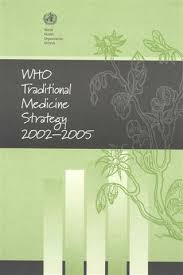 The first WHO Traditional Medicine Strategy 2002-2005 focused on safety, efficacy, quality, and rational use of traditional and complementary medicine, and it was an important accomplishment that enabled significant advances for the integration of TCIM into health systems throughout the world.
The first WHO Traditional Medicine Strategy 2002-2005 focused on safety, efficacy, quality, and rational use of traditional and complementary medicine, and it was an important accomplishment that enabled significant advances for the integration of TCIM into health systems throughout the world.
The strategy was updated in 2013, and published under the title “WHO Traditional Medicine Strategy 2014-2023”, with the objective of “helping Member States to develop dynamic policies and apply action plans that reinforce the role of [TCIM] in keeping people’s health”, harnessing the “potential contribution of [TCIM] to health, wellness, and people-centered healthcare”, promoting “the safe and effective use of [TCIM] through regulation and research, as well as the incorporation of products, practitioners and practices in health systems, whenever applicable”. Its three strategic objectives are:
- To build the knowledge base for active TCIM management through appropriate national policies;
- To strengthen quality assurance, safety, adequate use and effectiveness of TCIM through the regulation of its products, practices, and practitioners;
- To promote universal health coverage by integrating TCI Medicine services into healthcare services and self-health care.
In the Americas, PAHO/WHO has led regional and national initiatives to promote TCIM. Some of these initiatives include: (1) Resolution CD37.R5, urges member states to promote the transformation of health systems and support the development of alternative models of care for indigenous populations and the development of investigation networks; (2) documentation of several traditional medicine systems and their relations with populations and national health systems; (3) creation of conceptual landmarks for the development of intercultural health models; (4) development of regional strategies to promote the integration of TCIM into national health systems; (5) facilitation of regional workshops to regulate on medicinal plants and TCIM policies; (6) implementation of the Indigenous Medicine and Therapies in Primary Healthcare Project. PAHO/WHO participated in the development of the first WHO Traditional Medicine Strategy (2002-2005).
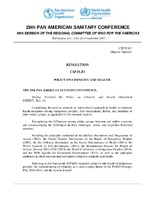 Recently, PAHO/WHO adopted, through Resolution CSP29.R3, the Policy on Ethnicity and Health that proposes the implementation of actions with intercultural focus and the following priority lines for technical cooperation among Member States: a) to generate evidence, b) to call for action in policies, c) to foster social participation and strategic alliances, d) to recognize ancestral knowledge and traditional and complementary medicine, and e) to develop capabilities at all levels. This policy encourages Member states to promote public policies that address ethnicity as a social determinant of health; to foster better access to quality health services, promoting intercultural health models, systems and services, including the perspective of the ancestral and spiritual wisdom and practices of indigenous peoples, Afro-descendants, gipsies, and members of other ethnic groups; to promote the generation of knowledge and dedicated spaces for ancestral medicine and wisdom; to integrate the ethnical focus and vision of these people in the application of the action health plan in all policies (document CD53/10, Rev. 1 [2014]); and to promote intersectoral cooperation for the sustainable development of indigenous peoples, Afro-descendants, gipsies, and members of other ethnic groups.
Recently, PAHO/WHO adopted, through Resolution CSP29.R3, the Policy on Ethnicity and Health that proposes the implementation of actions with intercultural focus and the following priority lines for technical cooperation among Member States: a) to generate evidence, b) to call for action in policies, c) to foster social participation and strategic alliances, d) to recognize ancestral knowledge and traditional and complementary medicine, and e) to develop capabilities at all levels. This policy encourages Member states to promote public policies that address ethnicity as a social determinant of health; to foster better access to quality health services, promoting intercultural health models, systems and services, including the perspective of the ancestral and spiritual wisdom and practices of indigenous peoples, Afro-descendants, gipsies, and members of other ethnic groups; to promote the generation of knowledge and dedicated spaces for ancestral medicine and wisdom; to integrate the ethnical focus and vision of these people in the application of the action health plan in all policies (document CD53/10, Rev. 1 [2014]); and to promote intersectoral cooperation for the sustainable development of indigenous peoples, Afro-descendants, gipsies, and members of other ethnic groups.
It is equally important to highlight that the PAHO/WHO Strategy for Universal Access to health and Universal Health Coverage (Resolution CD53.R14) reaffirms the need to strengthen and/or develop health models focused on people in the communities, to meet the specific and different needs of the several population groups; and recognizes that respect to traditional medicine, as well as access and rational use of medication and other safe, effective, and quality health technologies continue to be a challenge for most of the Region countries.
This Universal Health Strategy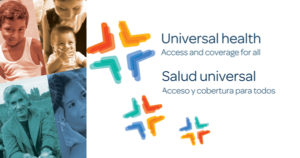 also proposes to “structure or consolidate collaborative multidisciplinary health teams and strengthen resolutive capacity with access to information”; and “strengthen the professional and technical human resources profiles in health and/or introduce new profiles, coherent with the transformation or strengthening of the healthcare model.” In this sense, it is important to highlight that the Declaration of Alma-Ata recognized the importance of traditional medicine agents as participants of primary care teams.
also proposes to “structure or consolidate collaborative multidisciplinary health teams and strengthen resolutive capacity with access to information”; and “strengthen the professional and technical human resources profiles in health and/or introduce new profiles, coherent with the transformation or strengthening of the healthcare model.” In this sense, it is important to highlight that the Declaration of Alma-Ata recognized the importance of traditional medicine agents as participants of primary care teams.
In 2005 was published the WHO Global Atlas of traditional, complementary and alternative medicine, which gave key information about the T & CM implementation in health services and systems, as well as the stadistic information of use and prevalence ot those, in different countries of the world.
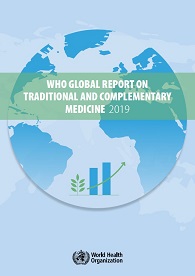 In 2019, the WHO Global Report on Traditional and Complementary Medicine 2019 was presented. It was developed " to address the gap in reliable, credible and official data from Member States in the area of T&CM". This report provides important information about the implementation processes in heath systems and services of the Traditional and Complementary Medicine. "This report reviews the overall progress in T & CM over the past two decades and is based on the contributions of 179 WHO Member States. It provides valuable information for policymakers, health professionals and the public to capitalize on the possible contribution of T & CM to health and well-being."
In 2019, the WHO Global Report on Traditional and Complementary Medicine 2019 was presented. It was developed " to address the gap in reliable, credible and official data from Member States in the area of T&CM". This report provides important information about the implementation processes in heath systems and services of the Traditional and Complementary Medicine. "This report reviews the overall progress in T & CM over the past two decades and is based on the contributions of 179 WHO Member States. It provides valuable information for policymakers, health professionals and the public to capitalize on the possible contribution of T & CM to health and well-being."
Definitions
Traditional medicineTraditional medicine has a long history. It is the total sum of the knowledge, skills and practices based on the theories, beliefs, and experiences indigenous to different cultures, whether explicable or not, used in the maintenance of health as well as in the prevention, diagnosis, improvement, or treatment of physical and mental illness. (WHO)
Complementary medicineThe terms “complementary medicine” or “alternative medicine” refer to a broad set of health care practices that are not part of that country’s own tradition or conventional medicine, and are not fully integrated into the dominant health care system. They are used interchangeably with traditional medicine in some countries. (WHO)
Traditional and Complementary medicine (TCM)Traditional and complementary Medicine merges the terms “traditional medicine” and “complementary medicine”, and encompasses products, practices, and practitioners. (WHO)
Integrative MedicineIntegrative medicine and health reaffirms the importance of the relation between practitioner and patient, focuses on the whole person, is informed by evidence, and makes use of all appropriate therapeutic and lifestyle approaches, healthcare professionals and disciplines to achieve optimal health and healing. (The Academic Consortium for Integrative Medicine & Health). A type of care that combines conventional (standard) medicine with complementary and alternative therapies that have been shown to be safe and effective. The complementary and alternative practices treat the patient’s mind, body, and spirit. (National Cancer Institute)
VHL TCIM Website
The Virtual Health Library Traditional, Complementary and Integrative Medicine (VHL TCIM) is organized into sections
Main menu:
-
-
About VHL TCIM: this section brings information about the background of the VHL TCIM, its aims and projects; relation to PAHO/WHO policy instruments; information about the TCIM Americas Network (background, members, mission, vision, and objectives of the network); and information about TCIM topic.
-
Directory of Institutions: this section brings an inventory (organized by countries) of the different bodies that work in the management/regulation, training, research, integration of TCIM into health systems. The organizations listed are sorted in the following categories: Health Authority, Academy (TCIM training and research), Healthcare Providers, and Public Health Program Implementing Staff, TCIM Collaboration Networks, Professional Associations/Consortia; Indigenous and Non-Government Organizations.
-
Regulation and Policies: this section brings information about the TCIM legislation and implementation models in the health systems of countries in the Americas, as well as regulation on TCIM practices, practitioners, and products.
-
Traditional Medicine in Ethnic Diversities: In this section, you will find information on indigenous peoples, African-descendants and other ethnic diversity of the Americas, which includes a description of the health situation, their ancestral knowledge in health practices and traditional medicine, their own health models, relevant organizations and resources of interest.
-
Academic Consortium: An initiative that started with the Brazilian Integrative Health Consortium and that is intended to expand to the region, looking forward to further development of an academic research consortium in each country. The subsection includes the universities that are part of the consortium, discussion and debate tools, research project records, and others.
-
TCIM Database Search Tool:
This section brings the search box for TCIM Database; the service enables searching by words, terms and/or phrases of the collection’s bibliographic references. There is also one option for advance research in the database. Click here for basic instructions on how to use it?
Highlights Section:
Located immediately under the main menu, this section brings important announcements for the theme, highlighting the most important events, key publications, capacity-building courses, new sections, and updates of the VHL TCIM, and important facts in the integration of TCIM the Americas´ region, among others.
Headlines Sections:
This section, located on the main portal page, brings tags to four lines of action:
-
Health Strengthening: This section brings health proposals, strategies, and models aimed to strengthen and promote health from the perspective of Traditional, Complementary, and Integrative Medicine, and related therapies and practices (TCIM)
-
Understanding TCIM: Section dedicated to general knowledge of TCIM, including definition, concepts, and evidence dossiers. It includes the thematic structure and terminology used to organize the VHL, its database (MOSAICO) and search tools.
-
Strengthening Research: This section includes a useful collection of relevant academic resources for researchers in training, junior and senior researchers. One of the purposes of VHL TCIM portal is to improve the skills in research in the field of TCIM.
-
Conceptual Models: This section is dedicated to the dialogue of knowledge, reflections, and exchanges about the diversity of health paradigms, approaches, and models that support and operate intervention proposals, healthcare, self-care, and the strengthening of health associated TCIM. It highlights the TCIM concepts and models developed in the Americas Region
News Section:
This section brings relevant news on TCIM from the communication media, relevant academic publications, and also from members of the TCIM Americas Network.
TCIM Infometrics:
The first infometrics was based on technical and scientific literature about Traditional Medicine and Complementary Therapies (TC&M) indexed in MEDLINE and LILACS database up to May 2017. Approximately 160 thousand bibliographic records were included in the analysis, in which they were distributed by article, journal, and country, type of study, language, and publication year. It is possible to combine the elements of each group to get the list of documents. The infometrics analysis is applicable to identify the concentration or gaps of the scientific production available about TCIM in the international literature. > > Link to infometrics.
Direct access:
This section offers access to search results in document sets based on a specific database or on a specific criterion, such as “systematic reviews.” It also brings direct access to other TCIM database, scientific evidence, clinical practice guides, protocols, reference publications, among others.
Links of interest:
This section offers links to other initiative related to the theme, with an emphasis on another website that follow VHL methodology. You can also find links to other reference pages, such as the WHO page on Traditional, Complementary, and Integrative Medicine.
Contact
This section brings contact information of the VHL TCIM website administrators and editors, as well as of the specialized database.
VHL TCIM Collection
The bibliographic collection of the VHL TCIM Americas, has two main sources: a) the harvest (through a search strategy) of existing databases (including Medline, LILACS, WHOLIS, mainly); b) the documents entered into the specialized database in TCIM of the Americas region (MOSAICO) that is being developed by BIREME with the support and management of the TCIM Americas Network. The documents (scientists and technicians) that are part of this collection have been published mostly in journals, but also includes books, theses, technical and non-conventional documents.
The TCIM Americas Network and BIREME team built the criteria selection for the documents that are being added to MOSAICO database, most of which are produced in academic institutions and government organizations. And also, they built a thematic structure to developed the different search strategies to compile the documents from different sources.
The collection started in June 2017, and the gathering of references was conducted based on a search strategy in the three databases of VHL Regional Portal:
LILACS - Latin-American and Caribbean Health Sciences Literature.
MEDLINE - International Health Sciences Literature (which also includes PubMed).
WHOLIS - WHO Library Database indexed in IRIS Repository
The search is made every week to update the VHL MTCI collection with new documents. Based on the results of a given search, a breakdown into categories is presented and works as a search filter such as a database, subtopics of interest, subject, journal, year of publication, country, and others.
At present, the BIREME team and the stakeholders of TCIM Americas Network have been reviewing the existing DeCS and MeSH terminology in the TCIM field to refine the search strategy for the collection of data. Additionally to improve document classification in VHL TCIM and in other databases and information search engines.
In the first phase, the search expression applied in VHL to select documents about the topic including the following terms in Spanish, English, and Portuguese:
ʺAlternative Medicineʺ OR ʺAlternative Therapiesʺ OR ʺAlternative Therapyʺ OR ʺComplementary Medicineʺ OR ʺComplementary Therapiesʺ OR ʺComplementary Therapiesʺ OR ʺComplementary Therapyʺ OR “Magnetismo Vegetal” OR “Medicina Complementar e Integrativa” OR “Medicina Complementar” OR “Medicina Complementaria e Integradora” OR “Medicina Complementaria” OR “Medicina Folclorica” OR “Medicina Indigena” OR “Medicina Integradora y Complementaria” OR “Medicina Integrativa e Complementar” OR “Medicina Popular” OR “Medicina Primitiva” OR ʺMedicina Alternativaʺ OR ʺMedicina Ancestralʺ OR ʺMedicina Holísticaʺ OR ʺMedicina Integrativaʺ OR ʺMedicina Naturalʺ OR ʺMedicina Tradicionalʺ OR ʺMedicina Tradicional Indígenaʺ OR ʺMedicinal and Cosmetic Plantʺ OR ʺMedicinal Herbʺ OR ʺMedicinal Herbsʺ OR ʺMedicinal Plantʺ OR ʺMedicinal Plantsʺ OR Ethnobotany OR Ethnomedicine OR Ethnopharmacology OR Fitoterapia OR ʺFolk Medicineʺ OR ʺFolk Remediesʺ OR ʺFolk Remedyʺ OR ʺHealing Plantʺ OR Herbolaria OR ʺHome Remediesʺ OR ʺHome Remedyʺ OR ʺIndigenous Medicineʺ OR ʺPharmaceutical Plantsʺ OR Pharmacognosy OR Phytotherapy OR ʺPlant Extractsʺ OR ʺPlantas Curativasʺ OR ʺPlantas medicinaisʺ OR ʺPlantas medicinalesʺ OR ʺPharmaceutical Plantʺ OR “Prácticas Complementarias e Integradoras” OR “Practicas de Salud Complementarias e Integradoras” OR “Practicas de Salud Integradoras y Complementarias” OR “Practicas Integradoras y Complementarias” OR “Práticas Complementares e Integrativas” OR “Práticas de Saúde Complementares e Integrativas” OR “Praticas de Saude Integrativas e Complementares” OR “Práticas Integrativas e Complementares” OR “Praticas integrativas” OR “Remedios Caseiros” OR “Remedios Caseros” OR “Remedios Folcloricos” OR “Remedios Populares” OR ʺTerapias Alternativasʺ OR ʺTerapias Complementariasʺ OR ʺTraditional Medicineʺ
In the second phase, a thematic structure was used with more than 80 different search strategies to collect all the documents of the TCIM field. Each one of the strategies for each topic of the thematic structure was elaborated with the DeSC, MeSH descriptors, and also a list of keywords in order to collect the most existing articles and documents. This new collection was developed in March 2018, and since then it gets actualized every day.
The MOSAICO Database
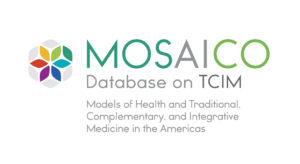 The database for Traditional, Complementary and Integrative Medicine and related therapies - MOSAICO is a collaborative product of the TCIM Americas Network. The database applies the LILACS methodology for bibliographic description and indexing with the DeCS Vocabulary (the document’s Descriptors in Health Sciences).
The database for Traditional, Complementary and Integrative Medicine and related therapies - MOSAICO is a collaborative product of the TCIM Americas Network. The database applies the LILACS methodology for bibliographic description and indexing with the DeCS Vocabulary (the document’s Descriptors in Health Sciences).
The MOSAICO Database includes conventional and non-conventional documents on Traditional, Complementary and Integrative Medicine and related practices -TCIM-, in the context of the Region of the Americas. The documents in the database are of a technical-scientific nature.
The MOSAICO Database seeks to make visible those investigations, and technical documents that are not indexed in other databases, but whose content contributes to the implementation of the TCIM in health systems and services, and constitutes a tool for health professionals, both in clinical practice, as well as in academic settings, and in health decision-making.
Access to the MOSAICO Database is free and can be through the VHL MTCI Americas.The main selection criteria for documents applied to the MOSAICO database are:
Thematic Coverage: Traditional, Complementary and Integrative Medicine, covering all types of complementary and integrative therapies.
Types of documents: journal articles, thesis, books, book chapters, technical reports, government documents, legislation, educational material, papers presented at congresses and scientific-technical events, and all types of non-conventional literature.
Chronological Coverage: There is no chronological restriction, preference given to the entry of more recent material to contribute to the topicality of the database.
Geographical Coverage: TCIM documents will be included in the context of the Americas, regardless of the nationality of the authors or country of publication of the document, as well as the documents produced by the Pan American Health Organization (PAHO), its Programs and Specialized Centers.
Idiomatic Coverage: Documents in Spanish, Portuguese, English, French that are official PAHO´s languages, will be considered for inclusion, but MOSAICO can include documents of other languages and dialects.
Full-text availability: Priority given to the registration of documents with access to the full text available.
To see more information and the Selection Criteria of the MOSAICO Database. The logo of the TCIM Americas Network integrates the continent, south, center (including the Caribbean), and north, represented by the three colors.
The logo of the TCIM Americas Network integrates the continent, south, center (including the Caribbean), and north, represented by the three colors.
The imagotype (graphic) is the fusion of the tree and the continent, creating a rhizome shape where the trunk, in dark green, represents the mountain ranges, the central axis of the Americas; and the branches, in light green, expand throughout the continent opening pathways.
The tree represents ancestral knowledge, tradition, the essence, the organic tissue, the genealogy, and the support that gives life to a system. It refers to the tree of life and the tree of knowledge, which are ancestral archetypes that represent the connection of all forms of creation, all philosophies and knowledge. Medicine, as a tree, is nourished by different knowledge and visions, which have a common support, the art of healing, and that also supports different branches, representing the different medical systems and existing therapeutic methods.
Its leaves in the three tonalities represent the different actors that make up the Network. The rhizome woven between the branches and the leaves show the connection and articulation that is maintained through its roots, throughout the territory and symbolizes the collective actions of the Network to articulate TCIM in health systems and services, to contribute towards universal health.
The green color, in its different shades, evokes life and the processes of healing, growth, vitality, and development. It provides tranquility, security and equilibrium. It is related to the symbolism of different medical systems. In Ayurvedic medicine, the green color of the 4th chakra, is related to unconditional love, leading to universal consciousness. Likewise, in other medical systems, green is the color of healing and health on all levels, physical, mental and emotional. The color gray is neutral, it represents the balance between the energy of the black and white colors, the balance of the positive and negative forces, the harmony of the healing processes, the complementarity and the movements of nature and of the human being.
The logo and the imagotype are framed in the basic square shape that symbolizes strength and balance that the work of the Network has.
 The MOSAICO database is one of the products of the TCIM Americas Network, represented in the imagotype as a flowering of the Network´s rhizome.
The MOSAICO database is one of the products of the TCIM Americas Network, represented in the imagotype as a flowering of the Network´s rhizome.
The logo is framed in a rectangular shape that alludes to the horizon to symbolize the stability, depth, and commitment of the work of the Network in the creation of this database. The letters of the acronym retake the shades of green and gray, used in the logo of the MTCI Americas Network, which represent harmony, complementarity, balance, healing, and life. Its rounded font harmonizes with the hexagonal image.
The MOSAICO imagotype groups the leaves of the Network´s logo in a concentric geometric form, symbolizing the actors of the Network connecting and working collaboratively towards common interests, in this case, the creation of a database specialized in TCIM. MOSAICO collects information on health, technical documents, and research products from the various TCIM medical systems and therapeutic methods. This variety is symbolized by the diversity of colors in its leaves and/or petals. The right upper petal (dark green) that protrudes in the hexagon maintains the connection with the TCIM Americas Network tree.
The MOSAICO imagotype is based on the geometric structure of the flower of life, which is an ancestral archetype used by different traditions, and associated with healing methods. The structure shows how all things come from a source, where individual data are interconnected with each other, permanently interweaving. This symbolizes the common source that is the need for knowledge in health, and the production of research in TCIM, and the interconnection of the documents that make up this database.
This geometric figure is framed in a hexagon, which relates to the forms of nature to store, in this case, information and knowledge in health, through the MOSAICO database.
- Presentation of the VHL MTCI Americas
- Launch speech of the VHL MTCI of Dr. Carissa Etienne, Director of PAHO and Dr. Diego González, Director of BIREME
- VHL MTCI playlist on the VHL Network YouTube channel
Image gallery
The VHL TCIM aims to promote the visibility, access, use and generation of scientific, technical, and educational contents that contribute to the promotion, development and integration of the TCIM in the health services and systems in the Americas Region, through the collaboration of stakeholders.
In this section, photos of the events, meetings and other activities that the TCIM Americas Network/ VHL TCIM has participated are available.
If you are part of the TCIM Americas Network, share your photos with us via e-mail: bvsmtci@gmail.com, for publication in the VHL TCIM Americas.
Image galleryResults reports
The results reports seek to share the activities developed by the VHL TCIM Americas and the TCIM Americas Network, which show the outcomes of its strategic plan. The VHL TCIM Americas was launched in March 2018, and the management team expects to be able to share each year of the evolution of this project through this section. In its first year, the VHL TCIM Americas, managed by the TCIM Americas Network, with the technical support of BIREME/ PAHO/WHO, has been developing an important agenda of activities to carry out the mission and vision proposed.- Summary Results reports 2018
- Management report 2018
- Donations
- Internships
- Graduate projects/Thesis
- Academic/research projects
- Become a member of the TCIM Americas Network



